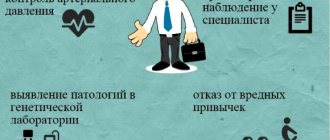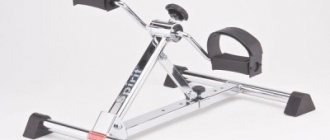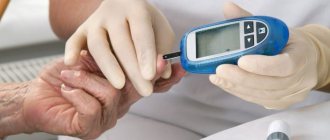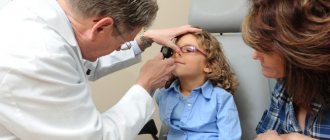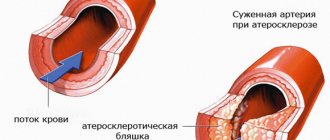Tachycardia (heart tachyarrhythmia) is a pathological condition of the cardiovascular system, characterized by an increase in the number of heartbeats per minute. We can talk about this disease when the heart rate exceeds 100 beats in 60 seconds. Tachycardia is often not a separate disease, but a concomitant symptom of diseases of certain organs.
In addition to increased heart rate during tachycardia, pathological changes in the type of rhythm can be seen on the electrocardiogram. Heart contractions become not only fast, but also chaotic, which leads to disruption of the flow of blood into the ventricles of the heart.
If treatment was not started in a timely manner, a decrease in the filling of the ventricles causes a serious disruption of the functioning of the organ and can subsequently cause a complete stop of blood circulation. Treatment of tachycardia at home is possible only after consultation with a doctor, with careful adherence to all his recommendations.
How does tachycardia develop?
The development of tachycardia is based on the activation of the sympathetic nervous system, which is part of the autonomic nervous system (ANS) located in the spine. Speaking in human language, the sympathetic nervous system is responsible for activating the work of one or another organ, but primarily the heart. There is also the parasympathetic nervous system, which is responsible for deactivating organ function. The vital activity of the organism, i.e. the functioning of human organs is regulated automatically, for example, a person’s inhalation is facilitated by the sympathetic nervous system, and exhalation by the parasympathetic.
If we translate this mechanism of the body’s vital activity into the plane of tachycardia, then we can draw the following picture: when the human body is exposed to any factor that is not characteristic of its normal state (stress, fear, overload, etc.), the sympathetic system increases the work of the heart - his sinus node, the heart rate increases. At the same time, if a person finds himself in a stressful situation, his production of adrenaline by neuroendocrine cells increases and its release into the blood, which is also the body’s protective function against possible danger. Adrenaline also increases your heart rate.
All this leads to the fact that the heart ventricles do not have time to fill with blood, which disrupts blood circulation throughout the body, lowers blood pressure, and the blood does not have time to fill with oxygen and deliver it in the required quantity to all organs.
That is why, with an increased heart rate, the patient experiences dizziness, up to loss of consciousness.
Nutrition for tachycardia
To prevent attacks, it is important to exclude any negative factors that can provoke heart failure. Patients with this diagnosis should limit the consumption of table salt, smoked foods, herbs, marinades and spices. These foods retain water in the body, causing edema, so it is better to completely remove them from the diet.
Thermal processing of food should be carried out by stewing, boiling or baking. Fried foods (especially fatty meats) contribute to the accumulation of bad cholesterol and the deposition of cholesterol plaques, so they are contraindicated for patients with tachycardia.
The patient's daily diet should consist of the following foods and drinks:
- fruit and vegetable juices, compotes, berry fruit drinks;
- cereals and cereals;
- lean meat and poultry (rabbit and turkey meat is especially useful);
- fermented milk products and milk;
- all types of fish;
- dried fruits;
- vegetables and fruits in any quantities;
- marmalade and pastille.
The patient’s menu must include all types of nuts, since this product contains large amounts of potassium and magnesium, which are necessary for healthy heart function. But do not forget about the high calorie content: you should eat no more than 8-10 nuts per day.
Causes and classification
Tachycardia is not a disease, but a symptom, since it can occur as a manifestation of many diseases. The most common causes of tachycardia are disorders of the autonomic nervous system, endocrine system disorders, hemodynamic disorders and various forms of arrhythmia.
Conventionally, the causes of increased heart rate (heart rate) are divided into two categories - physiological (objective) and pathological (subjective) . It is necessary to be able to distinguish one from the other; a person’s health and life may depend on it.
A physiological increase in heart rate is provoked by one or another external influence; it is always temporary and disappears in an adult healthy person 5-7 minutes after the disappearance of the stimulus. This condition is not threatening to human health or, especially, human life. Most often, the development of a physiological condition occurs for the following reasons:
- physical activity;
- stress state;
- emotional state;
- sexual arousal;
- pain;
- staying in a hot room;
- rise to a considerable height.
A physiological increase in normal heart rate also occurs when drinking alcohol and caffeine, smoking, taking energy drinks and certain medications.
The pathological form develops as a symptom of a host of diseases, including:
- inflammatory pathologies of the heart;
- mechanical failures of the heart;
- diseases of infectious nature;
- intoxication of various origins;
- anemia;
- state of shock, heavy bleeding, traumatic lesions;
- thyroid disease (especially hyperthyroidism);
- lesions affecting the nucleus of the vagus nerve;
- neurocirculatory asthenia;
- pheochromocytoma;
- various congenital developmental anomalies.
Timely detection of a pathological increase in heart rate is necessary, since even under the conditions of modern medicine, only early diagnosis will help preserve the health and life of a sick person.
Doctors distinguish three types of this condition:
- sinus;
- paroxysmal;
- ventricular fibrillation.
Let's consider each type of tachycardia and its pattern on the ECG.
Sinus is diagnosed most often . This condition is characterized by an increase of 20-40 beats per minute in cardiac activity at rest, in which the correct rhythm is maintained under the control of the sinus node.
The problem arises when a failure occurs in the complex system of generating impulses of a given node, as well as when the process of conducting sinus impulses directly to the ventricles of the heart is disrupted.
Paroxysmal is a condition in which attacks (paroxysms) of the heartbeat increase to 140-220 heartbeats per minute due to ectopic impulses replacing the normal sinus rhythm.
This type occurs suddenly and just as suddenly stops; the attacks-paroxysms have different durations, but the regular rhythm is maintained.
Ventricular fibrillation is understood as a type of tachyarrhythmia in which irregular contractions of several grouped muscle fibers of the heart ventricles occur, uncoordinated and ineffective, since in this condition the ventricular parts of the heart do not “pump up” pressure, which causes the heart muscle to stop functioning as a pump for blood flow. .
The contraction frequency reaches and exceeds 300 per minute.
Tachycardia is also classified into supraventricular and ventricular, but these types are determined by specialists after a thorough examination of patients.
Types of tachycardia
| Name | Definition | What caused it? |
| Physiological | Manifesting itself as the body’s response to an external stimulus | Phys. stress, caffeine, heat, drugs and alcohol, stressful situations |
| Pathological | Occurs when there is a malfunction in the internal organs | Hypertension, abnormalities in the functioning of the heart, weakening of the heart muscle, vascular disease, infectious diseases, poisoning and medication |
Return to contents
Symptoms of disease development
The work of the heart is independent, a person does not feel it at all as long as he is healthy and his state of health is in order.
The symptoms of this disease are extensive and varied. There are types of tachycardia in which it is difficult to recognize the disease. It is difficult to notice sinus tachycardia in a person. It does not increase the pulse, and the person simply gets tired quickly. An examination by a doctor will protect you from such problems. Noticeable symptoms of tachycardia are pain in the sternum, severe dizziness, fainting, shortness of breath, weakness, and causeless fatigue. The way a person breathes changes, he breaks out in cold sweat. Breathing becomes short and frequent, intermittent. Ventricular tachycardia is distinguished by obvious symptoms and a painful condition.
Return to contents
Symptoms
The main symptoms of tachycardia are:
- Chest pain;
- Confusion;
- Dizziness;
- Hypotension;
- Increased heart rate (pulse);
- Dyspnea;
- Weakness;
- Fainting.
| Type | What are the symptoms? |
| Sinus | The main symptom of the disease is lack of air. Other possible signs of sinus tachycardia:
The severity of symptoms depends on the sensitivity of the nervous system and the underlying disease of the person. |
| Supraventricular | As a rule, the patient can clearly indicate the beginning and end of the attack, which is manifested by a pronounced sensation:
|
| Paroxysmal | This is a sudden and suddenly stopping attack of heartbeat with a frequency of 150-300 beats per minute. The following features are highlighted:
|
| Ventricular | Symptoms of the disease include:
|
In some cases, tachycardia may occur without the manifestation of the above symptoms. In such cases, the condition is usually discovered through a physical examination or cardiac monitoring.
Causes of tachycardia
There are many causes of heart palpitations, ranging from heart disease to nervous diseases, tumors and infections.
Combined with other symptoms, an increased rhythm may indicate the cause of the pathology. Nevertheless, only a cardiologist or therapist should make the correct diagnosis, subject to a number of examinations. Attacks of tachycardia, accompanied by dizziness, loss of consciousness, lack of oxygen, general malaise, pain in the heart, indicate paroxysmal tachycardia, which appears suddenly in the form of attacks due to excessive consumption of coffee, smoking, alcohol and after taking a certain group of medications.
Taking into account the location of compression and pain, the type of tachycardia is determined:
- Supraventricular, when the impulse appears in the atrium of the heart;
- Ventricular, when the impulse occurs directly in the ventricle of the heart.
The type of disease can be determined only after an ECG. Based on symptoms alone, it is not possible to determine the type of tachycardia without an ECG.
No less dangerous causes of rapid rhythm are diseases of the heart and endocrine system:
- arrhythmia;
- thyroid diseases;
- heart disease.
Combined with dizziness, poor visibility, and pale skin, rapid rhythm occurs as a result of anemia. This type of deviation is typical for people with low hemoglobin levels, for pregnant women, for women suffering from heavy periods, and for people with cancer. In this case, only a doctor can establish a diagnosis if the results of a laboratory test of a general blood test are available.
Be sure to read:
Atherosclerosis of cerebral vessels: causes and treatment at home
In the case of cardiac arrhythmia, which occurs against the background of blood loss, dehydration with loss of body weight, it is possible that arrhythmia appeared as a result of an increase or decrease in the functions of the thyroid gland.
Tachycardia as a result of stress, a reaction as a result of a feeling of fear, panic accompanied by pain in the heart area, all these are symptoms of the vegetative-vascular system, the treatment of which cannot be delayed so as not to provoke the transition of tachycardia from a paroxysmal type to a permanent chronic form of the disease.
What is the danger?
In addition to rapid fatigue, unpleasant and sometimes painful sensations, any tachycardia becomes the cause of heart failure - the heart wears out. In addition to conduction disturbances and heart rhythm, tachycardia can cause complications such as:
- cardiac asthma,
- arrhythmic shock,
- pulmonary edema,
- thromboembolism of cerebral vessels,
- acute cerebral circulatory failure,
- pulmonary embolism.
Ventricular tachycardia in combination with acute myocardial infarction can cause death.
Is it possible to cure cardiac tachycardia at home?
Treatment of tachycardia that develops from the negative influence of external factors involves adjusting the diet and giving up bad habits. If you follow the recommendations, you can stop tachycardia at home. Treatment of tachycardia at home caused by internal diseases is possible only with the permission of a doctor. You can recover from tachycardia using folk remedies after consulting a doctor. You can fight it at home on your own, but it may take longer than in a hospital.
Return to contents
Tachycardia during pregnancy
Often, women who have not previously had problems with the functioning of the cardiovascular system experience attacks of tachycardia during pregnancy . Tachycardia during pregnancy is a consequence of changes in the female body. To understand what tachycardia is in this case, it is important to consider that during the process of bearing a child, the entire body as a whole functions with double load.
However, the direct causes of tachycardia are quite diverse and are still being studied by specialists. Thus, the main factor provoking heart palpitations should be considered a high level of hormones that exhibit sympathomimetic activity and, as a result, increase the heart rate. Other factors that cause tachycardia during pregnancy include weight gain in the pregnant woman, high metabolic rate, insufficient amounts of minerals and vitamins important for the body, anemia, and low blood pressure. The consequence of severe toxicosis is often negative changes in water and electrolyte balance, which can also provoke periodic attacks of tachycardia. Displacements of the heart due to anatomical changes in the body, the use of a number of medications can affect the condition of the heart muscle and provoke tachycardia.
Tachycardia in pregnant women is usually called a condition when the heart rate at rest is more than 90 beats per minute. In this case, the woman does not feel pain. The attack stops on its own. However, with a frequent increase in heart rate to 120 beats or more and accompanying unpleasant symptoms, a woman should consult a specialist and undergo examination. In this situation, an ECG is prescribed; echocardiography and thyroid hormone testing are used as additional studies.
Therapy for tachycardia during pregnancy involves taking herbal sedatives, as well as vitamins and preparations containing potassium and magnesium. It is important to adjust the water balance and prevent anemia.
What can cause tachycardia?
What causes the tachycardia must be determined by the attending physician. Only finding out the true cause will help you quickly solve the problem and begin proper treatment. But let's look at the reasons. Rapid heartbeat can occur due to various factors.
This may be a consequence of physical activity, stress, high temperature or large blood loss. This list may include a medical problem that you may not even be aware of.
- Hormonal imbalance in the body or hyperthyroidism.
- Arrhythmia.
- Lung problems such as pneumonia or thrombosis.
In addition, tachycardia can be caused by poor diet and consumption of certain drinks: tea, coffee, alcohol or chocolate. Some medications can also cause heart palpitations.
“If you feel tachycardia, consult a doctor and follow all his recommendations”
Manifestations in children
Indicators of normal heart rate vary depending on age, meanwhile, even infants are susceptible to tachycardia. The most common tachycardia among children is supraventricular tachycardia. Its characteristic features are an abnormally rapid contraction of the chambers of the heart. Such tachycardia, as a rule, is not life-threatening; in some cases, medical intervention is not even required.
Another, more serious type of tachycardia in children is ventricular tachycardia, which occurs when blood is pumped too quickly. It is rare in children, but in the absence of appropriate treatment it becomes life-threatening.
As for symptoms, tachycardia in children occurs when symptoms occur that are similar to its course in adults, namely:
- The appearance of chest pain;
- Increased heart rate;
- Fainting;
- Dyspnea;
- Dizziness;
- Nausea;
- Pallor;
- Weakness.
Infants also have characteristic symptoms that make it possible to determine tachycardia, although in general this is quite difficult due to the lack of children’s descriptions of their sensations. The following are distinguished:
- Increased breathing;
- Moodiness;
- Restlessness;
- Increased sleepiness.
Decoctions
- Infuse valerian root and calendula flowers (1 tablespoon each) in 1.5 cups of boiling water, drink 80-85 ml (a third of a cup) 4-5 times a day for 14 days, then take a seven-day break and repeat again.
- Infuse 1 tablespoon of hawthorn in one glass of boiling water, consume three times a day, half an hour before your next meal.
- Pour boiling water over lemon balm in the proportion of 1 tbsp. spoon in a glass of water, drink half a glass three or four times a day separately from meals.
- Cool the motherwort decoction (1.5 tablespoons per glass), add 3 drops of mint oil and honey to taste, take before bedtime.
- Infuse crushed bay leaves in a thermos in the proportion of 1 level tablespoon per glass of water, drink before meals (40 minutes before) four times a day.
- Brew a mixture of lovage, chicory, motherwort and hawthorn and calendula flowers, 1 tablespoon each, with a liter of boiling water, keep for a quarter of an hour in a “water bath”, use 2 tablespoons. spoons 6 times during the day.
Alcohol-containing tinctures
- Hawthorn tincture (pharmaceutical tincture is also suitable) in alcohol - 10-12 drops three times a day will help normalize the pulse rate.
- A tincture of elecampane roots aged for two weeks (150 g of dried raw material per 200 ml of vodka), consumed 1 teaspoon three times a day before meals, can also return the “fast heart” to normal.
- Infuse the dry bark of the Greek plant for two days at the rate of 2 tbsp. spoons per 150 ml of vodka, drink 6 drops three times a day for at least 21 days.
- Tincture of meadow clover - pour 3-4 handfuls of flowers with a liter of vodka and leave for a month, take 1 teaspoon four times a day for a month.
- Mix equal proportions of tinctures of peony, valerian, hawthorn and motherwort (pharmacy ones are also suitable) and drink 15 drops half an hour before meals at least three times a day.
Healthy “vitamin-mineral mixtures”
- Grind 3 lemons, 15 almonds, 100 grams of dried apricots, pour in honey, add 15 drops of hawthorn and valerian tinctures. Store the resulting heart-healthy mixture in the refrigerator, take a tablespoon on an empty stomach in the morning and at night.
- Mix two-thirds of a glass of raisins, four walnut kernels and 40g of honey, eat daily for 45 days.
Taking these mixtures will restore the balance of potassium, magnesium, calcium and sodium in the body, which will have a beneficial effect on the functioning of the heart.
The combination of dried apricots, honey, lemon and nuts is a “classic” mild mixture containing all the necessary vitamins and microelements to normalize heart contractions, and therefore it can be used as a prophylactic against tachycardia even in children and adolescents (if there is no allergy to these products). This remedy can also be used to treat angina pectoris at home.
lechenie-narodom.ru
Diagnostics
Diagnosis of the disease against which tachycardia occurs begins with a general visual examination and questioning. The doctor measures the pulse and conducts auscultation (listening) of the heart. The pulse is measured in the area of the wrist joint in one minute. The pulse rate does not always correspond to the heart rate. Typically, this method is used by emergency physicians to get an idea of the state of health.
Additional research methods, which include:
- Blood for general analysis.
It is used to determine the number of formed elements, which allows the doctor to recognize leukemia, anemia, etc. - Blood test for thyroid hormone levels.
This test helps identify hyperthyroidism. - If a tumor of the adrenal glands is suspected, a urine test
, which may contain breakdown products of adrenaline.
Of the instrumental research methods, the following have the greatest diagnostic accuracy:
- ECG
– allows you to determine the frequency, rhythm of heart contractions, etc. With its help, changes characteristic of various pathologies of the cardiovascular system are identified. The following types of ECG are used to examine patients:- with load – helps to identify rhythm disturbances during physical activity (bicycle ergometry);
- An intraesophageal ECG helps to obtain more accurate results about the disease - during this study, an electrode is inserted into the thoracic part of the esophagus;
- Holter monitoring of heart function - involves recording an ECG throughout the day and is used to determine sudden attacks of tachycardia.
- Phonocardiography
is a diagnostic method that allows you to record heart murmurs and sounds using sensors. With tachycardia, the phonocardiogram shows an increase in heart contractions, as well as changes in tones. - Ultrasound
of the heart helps determine the functioning of the valves and heart muscle. Ultrasound helps detect defects and chronic heart diseases.
Paroxysmal tachycardia
Melissa officinalis
Has a powerful sedative effect . To prepare the decoction, 1 tbsp. leaves and shoots of the plant are poured with 200 ml of boiling water. It is infused for about 30 minutes, filtered and taken on an empty stomach. The frequency of administration is several times a day.
Bay leaf
A decoction of it helps calm the heart and normalize its functioning. An infusion is prepared from crushed leaves. A glass of boiling water is poured into 1 tbsp. bay leaf. It is best to infuse in an airtight container. It is recommended to drink the decoction 2-3 times a day before meals.
How to treat tachycardia?
The therapeutic approach for any tachycardia must be individual. When eliminating this symptom, doctors are guided by the primary disease that caused it, as well as the general condition of the patient.
When prescribing treatment for tachycardia, doctors adhere to the following rules:
- In case of extracardiac tachycardia, consultation with a neurologist is required. Prescriptions come down to the choice of sedative medications - tranquilan, seduxen, relanium and others.
- If the syndrome in question was provoked by anemia, hypovolemia and/or hyperthyroidism, then you first need to get rid of these pathologies. Otherwise, the prescription of medications that reduce the heart rate may cause a critical decrease in blood pressure, and the picture of the hemodynamics of the heart will worsen.
- When diagnosing thyrotoxicosis and its background tachycardia, therapy is first carried out by an endocrinologist - it is advisable to prescribe beta blockers (for example, oxprenolol) to patients. If there are contraindications to the use of this type of medicine, then specialists can opt for calcium antagonists (for example, verapamil).
- Sinus tachycardia is provoked by heart failure - the patient is treated with beta-blockers and fast- or long-acting glycosides.
At the same time, at home, in order to normalize the patient’s condition, certain conditions must be met :
- Ensuring complete peace;
- Limiting physical activity;
- Maintain a sleep and rest schedule, sleep duration should be at least 8 hours;
- Exclusion of caffeine-containing drinks: black tea and coffee, as well as alcohol and smoking;
- Nutrition should be varied and balanced. It is necessary to exclude the consumption of fatty and fried foods, include fresh fruits and vegetables, as well as steamed vegetables, in the diet. Meals should be regular, divided, at least 5-6 meals, in small portions;
- Rooms should be well ventilated;
- Outdoor walks are recommended.
The psycho-emotional situation plays a key role in excluding attacks of tachycardia due to stress and nervous excitement.
First aid
The disease is unpredictable and can occur anywhere and at any time of the day or night. In order not to make it worse, you need to deal with the attack correctly. Loosen tight clothing, remove bra, unbutton shirt collar. Going out into the fresh air or opening a window will lower your heart rate. Hold your breath and take a deep breath to help calm your pulse. Massage your eyeballs to help relieve dizziness. Wash your face with cold water or dip your face in a bowl of it, this will help reduce blood pressure and calm tachycardia. Take a few drops of valerian, it can cope with tachycardia. To calm down, you should take validol.
Return to contents
Drug treatment
For tachycardia, several types of medications are used.
- Reflex – have a calming effect on the heart, “Corvalol”, “Corvaltab”).
- Sedatives are appropriate for psychogenic factors causing tachycardia (“Motherwort”, “Glitsed”, “Valerian”, “Persen”).
- Beta blockers - aimed at lowering blood pressure and normalizing cardiac activity (Bisoprolol, Propranolol, Carvedilol).
- Calcium channel blockers are used for emergency relief of attacks and have a short-term effect (Verapamil, Isoptin).
- Cardiac glycosides are prescribed to patients with rapid heartbeat due to heart failure (Strofanthin, Digoxin, Korglykon).
- Potassium channel blockers are effective for patients whose heart palpitations are accompanied by low blood pressure (Ari, Amiodarone).
Types of tachycardia and causes of its occurrence
It is important to understand that heart rate differs among people of different ages.
There are generally accepted heart rate values for each of them, however, each person has his own norm. In addition to age, this value can be influenced by the level of sports training of the body in general and the heart in particular (in athletes, the standard level of the number of heart contractions is lower than in untrained people, and averages 40-60 beats per minute).
Exceeding the normal heart rate is called tachycardia. In adults, it is customary to denote a heartbeat exceeding 100 beats per minute.
Surgery
Surgical treatment of paroxysmal tachycardia is used quite rarely and only in the absence of a stable effect from drug therapy. If the patient does not respond to conservative treatment, it is possible to ensure a normal rhythm and propagation of the impulse through the heart muscle through surgery.
The idea is that small electrodes are implanted into various parts of the heart, which take on the role of pacemakers. They regularly produce bioelectric impulses, suppressing the rhythm of other nodes. The most modern models even independently regulate the operating mode, based on blood pressure and normal filling of the ventricles with blood. In recent years, the installation of such a device is carried out using a minimally invasive method through the main (large) vessels.
Another treatment option is radiofrequency catheter ablation. Through the femoral vein, the doctor inserts special catheters into the heart, takes an ECG and determines pathological pacemakers. After this, the detected area is exposed to radio frequency radiation. In most cases, this suppresses cell activity and eliminates the cause of the arrhythmia. This treatment method is used for Wolff-Parkinson-White syndrome and other structural disorders.
Treatment
Treatment of tachycardia at home is aimed at reducing the number of heart contractions and normalizing heart function. For this purpose, a variety of means and medications are used, as well as massage.
Massage
If you have tachycardia, try to relieve it with carotid artery massage. This place is located on the border of the neck and head, quite deep under the jaw. As soon as you find the artery, begin to massage it with gentle movements. You need to do this for 2-3 minutes until you feel relief. Remember that if the massage is performed incorrectly, blood circulation to the brain slows down, which can result in dizziness.
Immersion of face in cold water
In marine mammals that swim in cold water, the heart rate is always somewhat slower. Therefore, a cold bath is very reasonable advice. Fill a bowl with cold water, place it on a raised surface, and plunge your face into it for 1-2 seconds. Sometimes this helps to quickly relieve an attack.
Gorse
Among all the folk remedies for tachycardia, the herb that stands out is gorse. It is prescribed in cases where the disease is very advanced, and there is no hope for other remedies and medicines.
So, we suggest you make the following infusion: pour 2 tablespoons of dried gorse with 2 cups of boiling water, let stand for 20 minutes and strain. Drink 100 ml 3-4 times a day.
Gorse thorny
You can also treat rapid heartbeat with the help of gorse. The dry seeds of this plant should be ground in a coffee grinder and taken 3 times a day, 1/3 teaspoon. You can dilute gorse powder with water or mix it with honey (this will soften the unpleasant taste of the plant).
Here is another recipe for using gorse: pour half a glass of the herb with 400 ml of vodka, close the lid tightly and leave in a dark place for 14 days, then strain. Take 10 ml of alcohol tincture 3 times a day, diluting it with 50 ml of water.
Some herbalists advise making an alcoholic tincture from the seeds of the thorny gorse. It is prepared like this: 2 tablespoons of seeds are poured into 100 ml of vodka and left for 10 days, after which it is filtered. Take 3 times a day, 20-30 drops, until tachycardia completely disappears.
Hawthorn
If you are worried about how to treat tachycardia, keep hawthorn fruits and flowers on hand at all times. They help strengthen and regulate the heart and eliminate arrhythmia. Hawthorn decoction is an excellent remedy for various types of stress and neuroses caused by insomnia, shortness of breath, and rapid heartbeat. Hawthorn also has a diuretic effect, removing excess fluid from the body, thereby lowering blood pressure.
So, at the first signs of tachycardia, you need to do the following medicine: pour a handful of hawthorn fruits or flowers into 1 liter of water, boil for 5 minutes and let cool. How to use? 0.5 glass of decoction 3 times a day before meals.
Adonis
If we talk about treating tachycardia with folk remedies, then we definitely need to talk about such a wonderful plant as adonis. Here is our recipe: boil 1 liter of water and add 2 tablespoons of spring adonis. You need to boil the potion over low heat for 5-7 minutes, then cool and strain. How to use? Adults - 1 tablespoon 3 times a day, children under 12 years old - 1 teaspoon 1 time a day before meals. With this medicine, you can completely cure cardiac tachycardia in just a month.
Herbal collection No. 1
You can treat tachycardia with folk remedies using the following collection:
- Melissa herb - 40 g
- Linden flowers - 40 g
- Nettle – 20 g
- Chamomile – 20 g
Mix all ingredients thoroughly. Take 1 tablespoon of the mixture and pour 1 glass of boiling water, leave covered for 5 minutes, then drink in one gulp. This remedy needs to be taken 3 times a day, and each time you need to make a new portion of the infusion. In just 2-3 months you will notice that these folk remedies have completely relieved you of unpleasant symptoms in the heart area.
Herbal tea No. 2
Here is another way to treat tachycardia. Take these herbs:
- Mint – 100 g
- Melissa – 100g
- Motherwort – 50 g
- Lavender – 50 g
This all needs to be mixed thoroughly. Next, take 1 tablespoon of the mixture, add 1 liter of water and simmer over low heat for 7-8 minutes. After the broth has cooled, it needs to be strained. During the day you should drink 2-3 glasses of this medicine. After a few days, you will notice that you feel much better, and after a few months of treatment, the tachycardia will completely go away.
Herbal tea No. 3
Here is another herbal tea recipe that will help successfully treat tachycardia:
- Chamomile flowers - 100 g
- Sunflower flowers - 100 g
- Heather – 50g
- Black currant leaves - 50 g
- Melissa leaves - 20 g
- Mint leaves - 20 g
How to cook: mix all ingredients thoroughly. Take 2 tablespoons of the mixture and pour into a 2-liter thermos. Pour boiling water over the herbs, close the lid and leave for 4-5 hours. This liquid should be taken 1 glass 3 times a day. It can be sweetened with honey or sugar.
Herbal tea No. 4
Anyone who has tachycardia knows how difficult it is to cure. But folk herbalists know thousands of recipes to combat this disease. For example, try this potion:
- Nettle herb - 100 g
- Birch leaves - 100 g
- Ginkgo biloba – 15 g
- Schisandra leaves - 50 g
- Mistletoe – 100 g
How to cook: take 1 teaspoon of herbal mixture and pour 1 glass of boiling water over it. Cover with a lid and wait 5-10 minutes, then drink in small sips. We recommend taking this remedy before bed to stabilize your heart rhythm and fall asleep easily.
Healing balm
Our great-grandmothers knew perfectly well how to treat tachycardia without doctors and expensive medications. They treated her with a healing balm:
- Garlic – 10 heads
- Natural honey - 1 liter
- Lemons - 10 pieces
Take 10 heads of garlic (namely heads, not cloves), peel them and grate them on a fine grater. Separately, squeeze the juice from the lemons. Mix garlic and lemon juice with honey and leave in an airtight container for 10 days in a dark and cool place. Next, use 1 teaspoon of this balm 4 times a day. Before swallowing it, you should thoroughly dissolve the balm in your mouth, even though this is unpleasant. With the help of such a drug you can cure heart tachycardia forever. By the way, many healers claim that such a balm should be taken throughout your life, and then no illness will be scary for you.
Delicious medicine
And now we will talk about how to treat tachycardia with the help of a very tasty and healthy mixture of nuts, honey and chocolate. No need to be surprised: the fact is that the above foods are rich in magnesium, and this element is an integral part of enzymes that inhibit the influx of calcium into cells with myocarditis, affecting normal heart rhythm. So, mix the following ingredients in a jar:
- Natural honey – 1 l
- Chopped almonds - 100 g
- Chopped walnuts – 100g
- Chopped natural dark chocolate – 100 g
- Cocoa – 100g
Try to consume 1 tablespoon of this mixture every morning (keep it in the refrigerator), and soon you will notice that you no longer have heart problems.
Grape leaves
Grape leaves contain a well-known antioxidant, resveratrol, which strengthens veins and makes them flexible. The fact is that resveratrol prevents the breakdown of proteins - elastin and collagen - the building material from which the walls of blood vessels are made. As a result of this, grape leaves prevent the formation of varicose veins, relieve all types of swelling, improve blood circulation in the extremities and protect blood vessels from destruction. The active substances contained in these plants also have an antispasmodic effect, lower blood pressure and slow the heart rate.
Prepare this decoction: pour 1 cup of finely crushed grape leaves into 1 liter of hot water and boil for 5-7 minutes. After this, wait until the product has cooled and strain it. The decoction should be drunk half a glass 2 times a day between meals. The course of treatment lasts 10-20 days, depending on the severity of the disease. Cardiologist Vera Yarovikova tells us about a healthy heart:
Electropulse therapy
Electropulse therapy is part of a complex of resuscitation measures and is aimed at quickly restoring normal heart rhythm. Its essence lies in a kind of “reboot” of the conduction system of the heart and myocardial cells using a powerful electrical discharge. The main indication for its use is ventricular fibrillation with severe impairment of the pumping function of the heart.
When performing electropulse therapy, the following rules are observed:
- chest compressions and artificial ventilation are interrupted during the discharge, but continue in the intervals;
- All metal objects or sensors of diagnostic devices are removed from the patient;
- doctors, nurses and other people nearby do not touch the patient at the moment the impulse passes due to the risk of electrical injury;
- the patient lies on a dry couch or surface that does not conduct electrical current;
- the use of defibrillation is beneficial only for so-called “shock” heart rhythms, otherwise it can aggravate the patient’s condition;
- the electrodes through which the impulse is transmitted to the patient must be moistened and in close contact with the surface of the chest.
To carry out electrical pulse therapy, a special device called a defibrillator is used. It produces electrical impulses with specified characteristics and transmits them to the electrodes. For resuscitation of ventricular tachycardia, several discharges are required, which are delivered with increasing voltage. This therapy is carried out until the heart rhythm stabilizes or until the moment of death of the patient is established in case of unsuccessful resuscitation
Causes of the disease
Many cardiac muscle cells can produce electrical impulses, but the frequency of these impulses is very low - about 30-40 / min. Such activity appears as an evacuation rhythm in the absence of normal sinus rhythm. During tachycardia, some heart cells begin to produce impulses much faster than the cells of the sinus node, and “take over” the function of controlling the heart rhythm.
The most common causes of the disease are:
- myocardial hypoxia (with ischemic disease and heart failure);
- hypertrophy of the heart muscle (so-called cardiomyopathy);
- structural heart defects (eg, accessory tract, valve defects);
- myocardial infarction (post-infarction scar);
- hypertension;
- the natural aging process, which causes degenerative changes;
- other factors such as side effects of certain foods (coffee, energy drinks), thyroid disease, electrolyte imbalance, certain medications.
Folk remedies
Treatment of tachycardia with folk remedies should be carried out with great caution, since there is a high risk of various complications of the disease and deterioration of the patient’s condition. Self-medication with folk remedies is not allowed until a final diagnosis is made and the cause of the tachycardia is determined. It is also not recommended to take various infusions and decoctions in parallel with drug antiarrhythmic treatment. The fact is that chemicals contained in some plants can enhance or, conversely, neutralize the effect of drugs. Therefore, it is recommended to consult a cardiologist before starting treatment for tachycardia with folk remedies.
For the treatment of tachycardia, there are the following traditional methods:
- Take a teaspoon of motherwort grass, a tablespoon of hawthorn fruit and a tablespoon of rose hips. a teaspoon of large leaf green tea. Pour the herb into a thermos, pour 500 milliliters of boiling water into the thermos, leave for about 30 minutes. Then we filter and drink this tea in two doses, morning and evening, dividing the amount in half. Take 20 days, then 10 days break.
- Healing mixture for tachycardia. Grind 2 walnuts, mix with 1 tbsp. l. honey, add lemon zest. Eat a portion of this paste before bed every day for a month, then take a 10-day break and repeat the course.
- A decoction of lemon balm and mint is also recommended for attacks of tachycardia. To prepare it, 2 tbsp. l. dry herbs are poured with boiling water and infused for several hours. After this, you need to strain the broth, you can add 1 tsp. honey Drink half a glass 2-3 per day.
- A sedative drug prepared from the following herbs: motherwort – 50 grams; peppermint – 100 grams; lavender – 50 grams; lemon balm - 100 grams. Mix all ingredients. Pour the collection with cold water (a liter of liquid per tablespoon of raw material). Place on low heat and leave after boiling for 8 minutes. Strain after cooling. You need to drink three glasses of decoction a day. Herbalists claim that with such folk remedies it is possible to cure tachycardia in a few months.
- You need to chop the chicory roots and pour a glass of boiling water over a tablespoon of the already crushed product. After it has been infused for one hour, you can take it three times a day after meals, a tablespoon.
Folk remedies can be an effective addition to drug therapy, accelerating the healing process.
How to urgently treat tachycardia?
The heart will quickly calm down if you take the following measures:
- use “Moon Breathing” or yogi breathing - inhale through the left nostril, while the right nostril is closed with a finger. Then exhale through the right and inhale through it while the left is closed. Repeat alternately for several minutes;
- wash with cool water or immerse your face completely in it for 3-4 seconds. It is advisable that its temperature does not exceed 2 degrees;
- by pressing your fingers on your closed eyes and holding them in this position for 2-3 minutes. The pressing force should be moderate and tolerable. To achieve the best effect, the procedure is repeated 1-2 times at intervals of 5-10 minutes;
- applying an ice compress - ice cubes are wrapped in a cloth and this “collar” is wrapped around the neck.
The effect of each method is individual and the effectiveness of any of them depends on the characteristics of the human body.
What else is worth knowing?
Doctors recommend patients with tachycardia not only drug treatment. To normalize your heart rate, it is very important to adhere to a healthy lifestyle and eliminate all possible factors that could cause a new attack of tachycardia. To do this, you should follow simple recommendations.
- The first step is to eliminate negative irritants - alcohol, smoking, caffeine. They accelerate the heart rate and can cause sudden attacks of tachycardia.
- Avoid excessive physical activity.
- Normalize your sleep schedule and try not to overstrain your nervous system.
- Avoid noisy places, try not to be in a crowd.
- Establish a clear daily routine - start the morning with therapeutic exercises, introduce a diet.
- Eat exclusively healthy foods, avoid fatty foods and fast foods.
- It is important to learn how to relax after a working day - for this you can do yoga, listen to relaxing music or walk in the fresh air.
- You should regularly visit a cardiologist to prevent attacks of tachycardia.
With repeated attacks of tachycardia against the background of the development of other symptoms, it is a reason to consult a doctor. It should be remembered that tachycardia is a symptom of many serious diseases.
How to get rid of it forever?
When treating tachycardia, everything needs to be taken into account. In the case of physiological tachycardia, it is necessary to avoid harmful drinks and food and get rid of stress. It is necessary to reduce the influence of unfavorable factors. You can completely get rid of tachycardia by following all measures and taking vitamins. Maintaining a healthy lifestyle and taking medications is mandatory. In case of pathological tachycardia, the frequency of attacks can be reduced with medications prescribed by the doctor. It is easy to prevent complications by combining medications, folk remedies and leading a healthy lifestyle.
Return to contents
Lifestyle correction
- Quitting bad habits - alcohol and smoking.
- Avoiding extreme situations.
- Adjustment of work and rest schedules. You need to sleep at least 8 hours a day and conserve your energy throughout the working day.
- Spending more time outdoors.
Return to contents
Sports activities
Cardiac tachycardia can be cured by playing sports. Hiking and water sports are suitable. Hiking and cycling help to get rid of the disease. Patients are advised to learn to relax and relax their muscles; yoga is suitable for this. Adjust your daily routine to have time to do exercises. Add breathing exercises to it (inhale through your nose, hold the air for 5 seconds and exhale through your mouth). Swing your arms and spread them to the sides. Do abdominal exercises. Rotate your torso by twisting. Taking a shower after training is helpful.
Return to contents
Diet for heart disease
It is worth removing fatty, fried, salty and low-quality foods from the menu. Get rid of provocateurs of increased heart rate, such as chocolate, sweet soda, coffee and tea. You should not eat food in large quantities. They are reviewing their diet in favor of healthy and vitamin-rich foods. Add vegetables and fruits containing magnesium and potassium. Dried fruits and honey are beneficial. Drink juices and clean water. Frying is replaced by steaming food. It is recommended to consume cereal porridges and bran. You can eat a little fish and seafood and low-fat varieties.
It is not recommended to consume ginger - it contains many substances that stimulate cardiac activity. This is harmful for patients with tachycardia.
Return to contents
Folk remedies
Each person is able to independently take care of their health thanks to a large number of different medicinal plants.
Folk remedies promise to get rid of tachycardia forever, but results can only be achieved by choosing the right remedy. Even folk recipes are selected after consulting a doctor, so as not to cause harm. There are a number of effective recipes:
- Grind 10 cloves of garlic, squeeze out the juice of 10 lemons and add honey to it. Mix. Keep refrigerated and consume 4 tablespoons once a day.
- Brew 1 tbsp. spoon of Adonis in a glass of boiling water, leave for 25 minutes, drink 1 tbsp. spoon twice a day.
- Brew 1 spoon of hawthorn in a glass of hot water, insist and drink with every meal. Course 15 days.
- Make a tincture of valerian and chamomile in 300 grams of hot water. Each one is given a spoon. Take a quarter glass before each meal for 2 weeks.
- Combine hawthorn, lovage, motherwort and calendula. Brew and drink 3 times every day.
- Melissa is brewed in the amount of 1 spoon per half cup of boiling water. Taken three times a day.
Return to contents
Facts about magnetic therapy
Recently, magnetic therapy has become popular. However, this method is not recognized by official medicine because it has no proven therapeutic effect. However, those who have tried the effect of a magnet on themselves note that magnet treatment improves blood circulation, helps normalize blood pressure, improves the composition of the blood, thinning it, which helps pump blood more easily. Adherents of the technique claim that wearing a magnet around the neck helps to dilate blood vessels and relieve excess stress on the heart.
Return to contents
Drugs used
Medicines are needed when other treatments have failed. Sedatives and drugs that slow the heart rate are prescribed. If the person’s condition allows, he is left at home. In other cases, tachycardia is treated in hospitals. The type of medications prescribed depends on the severity of tachycardia: from light herbal tinctures to antidepressants such as Seduxena and Relanium. Drugs that suppress heart rate are prescribed by the doctor after the ECG. Among them are tablets “Asparkam” and “Panangin”, “Anaprilina” and “Concora”, “Verapamil”. If adverse reactions occur, you should immediately stop taking medications.
Return to contents
Forecast
Sinus tachycardia in patients with heart disease is most often a manifestation of heart failure or left ventricular dysfunction. In these cases, the prognosis can be quite serious, since sinus tachycardia is a reflection of the reaction of the cardiovascular system to a decrease in ejection fraction and a disorder of intracardiac hemodynamics. In the case of physiological sinus tachycardia, even with pronounced subjective manifestations, the prognosis is usually satisfactory.
The prognosis for patients with ventricular tachycardia is unfavorable, since in most of them it is a manifestation of severe myocardial damage. Mortality is especially high among patients with acute myocardial infarction complicated by heart failure and hypotension.
Cardiac arrhythmia Bradycardia: symptoms and treatment Cardiac myocarditis Hypertension Rheumatism of the joints Angina pectoris - what should and should not be done at home?
Sinus tachycardia
Drinking a vitamin composition and heart tea based on fruits and herbs will help normalize your heartbeat
Vitamin mixture
Nuts, honey and lemon have a good effect on heart function.
These ingredients will be needed to prepare a medicine for sinus tachycardia, which is taken before going to bed. Take 2 teaspoons of honey and 2 walnut kernels. The crushed kernels are mixed with honey and lemon juice. If necessary, drink the mixture with water. Eating after taking the vitamin composition is prohibited. The duration of the course is six months with a ten-day break in the last ten days of each month.
Heart tea
Calms rapid heartbeat. There is a ready-made collection for sale, but it is more useful to make it yourself at home. It is necessary to chop 1 tablespoon of motherwort shoots, rose hips and hawthorn berries, add 1 teaspoon of loose leaf tea (green) and brew 0.5 liters of boiling water. The tea is infused for half an hour. To achieve the best effect, use a thermos . Take a glass of infusion 2 times a day for three weeks.
Conservative therapy
Considering the type and cause of the development of such a disease, cardiac tachycardia (for example, sinus or paroxysmal) can be treated either conservatively or surgically. Medicines will help restore normal heart rhythm if its change is not associated with concomitant diseases of this organ. In the latter case, it is advisable to perform surgical intervention.
Another advantage of using medications is the ability to eliminate attacks of the paroxysmal type of disease, as well as prevent their occurrence in the future. Any medications should be prescribed only by a specialist doctor, taking into account the results of the diagnostic measures performed.
Normalization of rhythm with high blood pressure
In the event that arrhythmia with rapid heartbeat occurs with increased blood pressure, the following drugs are prescribed:
- Diroton (the active components of the drug help to dilate blood vessels when pressure increases, thereby ensuring its reduction to normal levels);
- Enap (the drug helps improve the functioning of the heart muscle and normalize blood pressure, the drug is recommended to be used in combination with diuretics);
- Verapamil (one of the most effective drugs in the treatment of tachycardia, which occurs with symptoms such as high blood pressure, nausea, etc.);
- Corinthal (belongs to calcium channel blockers; prescribed for high blood pressure to stabilize the heart rhythm);
- Normodipine (incoming substances help dilate the coronary and peripheral arteries, thereby providing a hypotensive effect).
The following medications will help eliminate arrhythmia with low blood pressure and normalize it:
- Valerian (tincture of such a plant has an antispasmodic effect, relieving a person of increased nervous excitability and thereby normalizing blood pressure);
- Valocordin (helps reduce muscle spasms, normalizes the activity of the central nervous system and sleep patterns);
- Grandaxin (has a psychovegetative effect, helping to eliminate neurotic conditions and normalize blood pressure).
Valerian tincture is a time-tested remedy for stress and nervous tension.
Cardiac arrhythmia caused by increased blood pressure is easily corrected with a medicine such as Phenazepam. This drug reduces nervous excitability, has an anticonvulsant and muscle relaxant effect.
Vitamin preparations in the treatment of disease
It is impossible to get rid of tachycardia forever in both children and adults without replenishing the lack of vitamins in the body. These are necessary not only for the proper functioning of the cardiovascular system, but also for the entire body as a whole. Their insufficient amount in the body is a source of development of central nervous system pathologies, contributing to the occurrence of frequent neuroses and stress. Failure to eat properly can make the situation worse.
So, what is the role of vitamins in the development of tachycardia:
We recommend reading:
Treatment of vegetative-vascular dystonia
- to normalize metabolic processes and reduce the risk of blood clots (thrombosis), experts recommend replenishing the normal amount of magnesium in the body;
- To prevent heart rate fluctuations, it is important to consume as many calcium-containing foods as possible;
- Selenium has a positive effect on the cardiovascular system, protecting vascular walls and organ tissues;
- The functioning of nerve impulses can be normalized through sufficient consumption of foods containing potassium and phosphorus.
It is worth noting that while maintaining proper and nutritious nutrition, it is still impossible to cover the daily need for vitamins, which are so necessary for the normal functioning of the heart. It is for this reason that it is recommended to take additional vitamin medications.
Blockers
It is necessary to cure tachycardia in adults and children with such means if it develops against the background of other cardiovascular pathologies. The types of blockers used for this disease include:
- alpha and beta adrenergic blockers (the former are effective for the concomitant development of hypertension, and the latter for blocking β1-adrenergic receptors, which helps reduce heart rate);
- calcium channel blockers (used to stop an attack of tachycardia by dilating and relaxing blood vessels);
- sodium channel blockers (provide blocking of sodium channels, inhibiting the flow of substances and thereby normalizing heart rhythm).
Adrenergic blockers include drugs such as Alfuzolin, Polpressin, Metoprolol, Timol, etc. Calcium and sodium channel blockers include Veracard, Kaveril and Quinidine with Cardil, respectively.
Cardiac glycosides
Drugs are usually prescribed if tachycardia develops against the background of heart failure, which occurs with accompanying symptoms such as a feeling of lack of air, wheezing, swelling of the extremities, splenomegaly, etc. Cardiac glycosides can be of both plant and synthetic origin. But neither one nor the other is inferior in effectiveness to each other.
Medicines can be divided into fast-acting and long-acting. The first group of drugs includes:
- Strophanthin (administered intravenously; the therapeutic effect is visible after 5 minutes);
- Korglykon (has a mild cardiotonic effect and is also used in solution form).
The second group of drugs includes:
- Digoxin and Celanide (a decrease in the intensity of symptoms occurs several hours after administration of the drug to the body);
- Digitoxin and Methyldigitoxin (have a longer duration of action - up to 3 days).
Such medications, both quick-acting and long-acting, should only be prescribed by your doctor. Otherwise, you can cause negative consequences and the development of side effects.
Prevention of tachycardia attacks
You can avoid the manifestations of tachycardia attacks; for this you need to:
- lead a healthy lifestyle;
- playing sports trains and strengthens the heart;
- Quitting smoking will allow the body to more effectively saturate the lungs with oxygen, and therefore the cardiovascular system;
- limiting the consumption of products containing caffeine will reduce the load on blood vessels and the heart;
- high-quality and complete sleep will have a beneficial effect on blood supply to the brain;
- Drinking the required amount of water will lower your blood pressure.
Techniques to reduce heart rate
Firstly, if the heart rate increases, the patient needs to lie down. Next, you need to unbutton your clothes and provide access to clean air. You can use sedatives to reduce the frequency of contractions within 20 minutes.
By influencing reflexogenic zones, you can eliminate an attack of tachycardia. Let's take a closer look at this technique.
The basic techniques are described below.
- By irritating the root of the tongue, you need to induce a gag reflex. In this case, the vagus nerve and, accordingly, the parasympathetic centers of the nervous system are stimulated.
- First, close your lips and close your nasal opening with your hand. Next, try to exhale. Repeat several times for 1-3 minutes.
- Simulate a severe coughing attack.
- Holding your breath also lowers your heart rate. Take a deep breath, hold your breath for 3-5 seconds. and exhale. We repeat the exercise for 3 minutes. This technique can be slightly modified. For example, we slowly count to 5 - take a breath, do not breathe for 3 seconds, and, accordingly, having counted to 8, exhale.
- When pressing on the carotid sinuses, chemoreceptors and baroreceptors are irritated. This leads to vasodilation, which automatically reduces blood pressure and heart rate.
Technique: the patient lies down on the bed. Massage the right side of the neck for no more than 10 minutes. The carotid sinus section is an enlarged part of the carotid artery. The movements are smooth, without excessive pressure, and there is no need to apply excessive force. If the patient has been diagnosed with increased carotid sinus syndrome, as well as elderly people, this method of eliminating tachycardia should absolutely not be performed .
- The patient lies down and closes his eyes. Next, use the pads of the index and middle fingers to apply pressure to the eyeballs. Namely, on the upper inner corner. Duration of exposure is about 10 seconds. You need to repeat on average 5 to 8 times.
- You can drink 1-2 glasses of cold water. What the essence of this technique is is still not fully known, but the experience of clinicians speaks of the positive effect of cold water on reducing heart rate.
All these methods of eliminating an attack of rapid heartbeat can be used in the supraventricular form of paroxysmal tachycardia.
If you need to stabilize your heart rate at home, medications such as Validol and Corvalol are the first-priority drugs.




